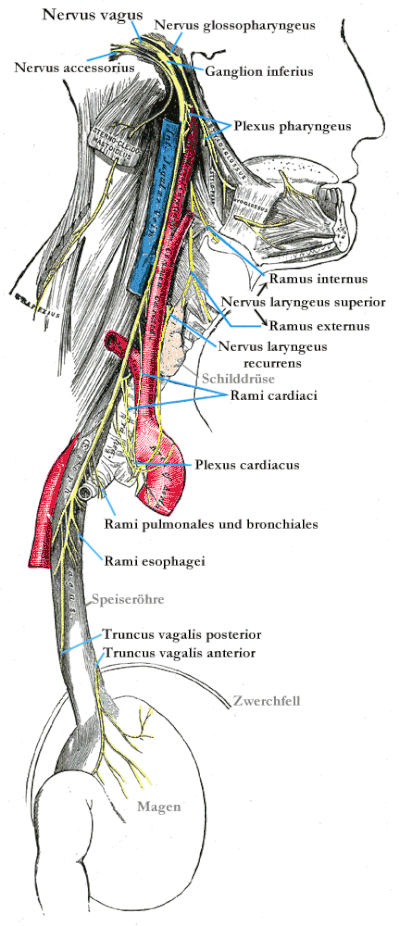Paresis of the superior laryngeal nerve
From WikiLectures
The superior laryngeal nerve branches off from the internal branch to the external branch.
- The internal branch sensitively innervates the supraglottic part of the larynx.
- The external branch motorically innervates the cricothyroid muscle.
Paresis of the superior laryngeal nerve can occur:
- damage to the nuclei vagus nerve;
- by damage to the vagus nerve above the distance of the superior laryngeal nerve – tumor, trauma, neurological disease, skull base surgery;
- damage to the superior laryngeal nerve – larynx surgery, pharynx surgery (rarely thyroid surgery).
As follows from the function of the superior laryngeal nerve, paresis of this nerve will lead to anesthesia of the supraglottic part of the larynx and paresis of the cricothyroideus muscle.
- Anesthesia of the supraglottic part of the larynx → dysphagia, food falling into the airways with the risk of aspiration.
- Paresis of the cricothyroid muscle → limitation of voice range.
Therapy: swallowing rehabilitation, phoniatric care.
Links[edit | edit source]
Related Articles[edit | edit source]
Source[edit | edit source]
- BENEŠ, Jiří. Studijní materiály [online]. ©2007. [cit. 2009]. <http://jirben2.chytrak.cz/materialy/orl_jb.doc>.
References[edit | edit source]
- KLOZAR, Jan. Speciální otorinolaryngologie. 1. edition. Galén, 2005. 224 pp. ISBN 80-7262-346-X.



